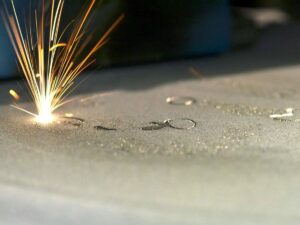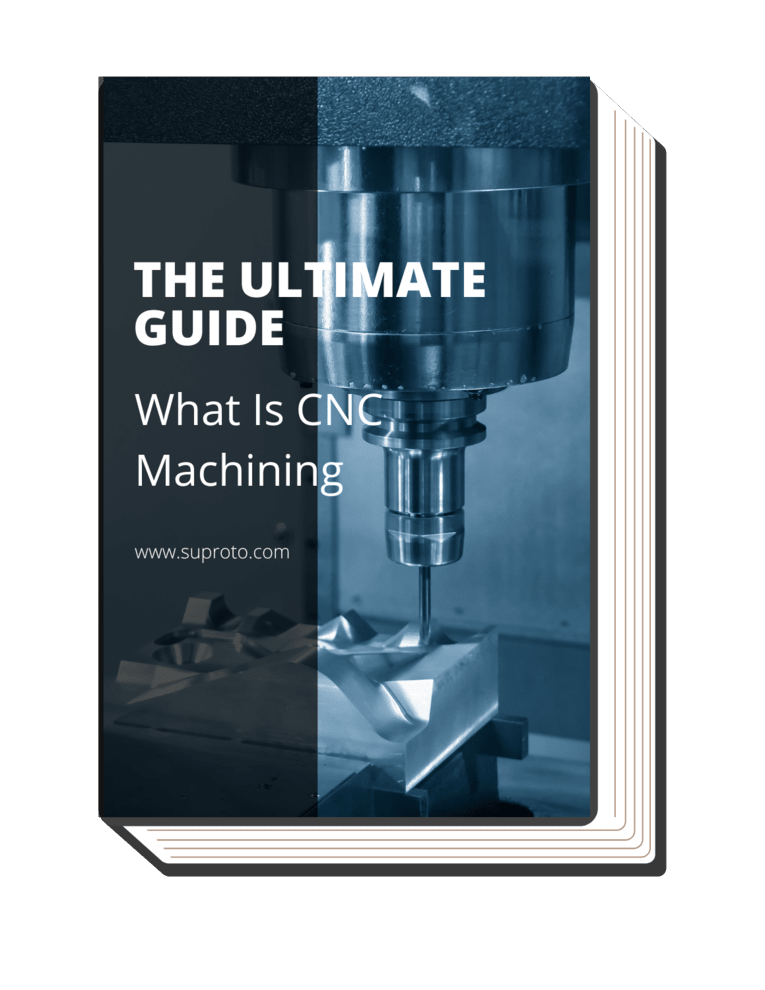In recent years, the 3D printing industry has developed rapidly and has been gradually applied to industries such as aerospace, automobiles, industrial design, military industry, and medical treatment. From the advent of the first commercial 3D printer in 1986, to the 3D printed biodegradable artificial tracheal implant reported in the New England Journal of Medicine in 2013, indicating that 3D printing technology has gradually played an important role in clinical medicine.
1. The Concept and Characteristics of 3D Printing Technology
3D printing technology, also known as additive manufacturing, provides an alternative to traditional methods of material removal processing. It offers the following advantages:
- Uses a layered process and superposition forming based on a three-dimensional digital model of the object.
- Eliminates the need for molds and mechanical processing, enabling the production of any shape directly from CAD graphic data.
- Simplifies the production of complex structures, significantly reducing the difficulty of manufacture.
- Shortens the development cycle, leading to improved production efficiency.
- Lowers production costs by streamlining the manufacturing process.
3D printing technologies have been transformative in the medical field, revolutionizing everything from prosthetics to bioprinting. Each of the three primary techniques utilizes unique processes and materials, resulting in the creation of intricately designed and highly precise components that meet diverse medical needs. The specific techniques utilized are detailed as follows:
Selective Laser Sintering (SLA)
Selective Laser Sintering (SLA) is a 3D printing technique that uses a high-powered laser to fuse small particles of polymer powder. The laser selectively targets the powder according to a CAD design, solidifying it layer by layer to form a three-dimensional object. This technology allows for the creation of complex and intricate designs, making it particularly useful in fields such as healthcare, automotive, and aerospace.

Selective Laser Melting (SLM)
Selective Laser Melting (SLM) is a 3D printing process that utilizes a high-powered laser to fully melt and fuse metallic powders. The laser follows a CAD-based digital design, forming the final product layer by layer. This method allows for the production of highly complex and precise metal parts, widely used in sectors demanding high-performance components like aerospace, medical, and automotive.

Fused Deposition Manufacturing (FDM)
Fused Deposition Manufacturing (FDM) is a 3D printing process. It constructs an object by layering molten material. The material hardens immediately upon extrusion from a nozzle. This technique is frequently used in prototyping and production applications.

2. Application of 3D Printing Technology in Clinical Medicine
1. Medical model and surgical planning
Medical imaging has developed rapidly in the past few decades, and multi-slice spiral CT, MRI, PET, and single photon emission computed tomography (SPECT) have generated high-quality image data. The 3D post-processing technology of imaging data needs to rely on high-performance workstations and software. The target area is segmented by segmentation tools, and the visualization tools are used for rendering, projection and multi-plane transformation. At present, 3D late-stage technology has been widely used in the diagnosis, preoperative evaluation and operation determination of diseases such as vascular surgery, oral and maxillofacial surgery, and neurosurgery.
The segmented target area is gridded and then transmitted to the 3D printing device for printing, and the 3D printer can directly print out the corresponding tissue and organ models. Compared with traditional imaging data, solid disease models display internal structures more intuitively, clearly, and three-dimensionally, and have richer anatomical information. In the preoperative planning, doctors can use solid models to diagnose the condition, formulate surgical plans, discuss surgical procedures and simulated operations, making operations more accurate and personalized, improving the success rate of complex and difficult operations, shortening operation time, and enabling The surgery is safer and more precise.
A doctor used 128-slice spiral CT data and 3D printing technology to prepare a complex skull base tumor model. Using this model and surgical navigation system for preoperative planning and risk assessment has significantly improved the success rate of neurosurgery. After coronary artery bypass grafting, some doctors used 3D printed patients’ hearts and related vascular models to carry out planning drills and intraoperative comparisons of aortic valve replacement, and successfully completed very difficult cardiac surgery. Another doctor performed CT analysis and modeling on a boy with a deformed left jaw defect. The experimenters analyzed and optimized the 3D printed mandibular model, accurately displayed the thin-walled structure, and worked out a maxillofacial bone repair plan.
2. Surgical Auxiliary Devices and Custom Medical Implants
At present, 3D printing technology is widely used in orthopedic surgery guides, hearing aids, dentures, prosthetics, orthodontics and various internal implants. The screw placement in traditional orthopedic surgery needs to be carried out under infrared or electromagnetic guidance. The equipment is expensive, the operation is cumbersome, and there is radioactive exposure. Using reverse 3D printing technology to completely match the individualized internal fixation template with the pathological entity is safer and more accurate.
Some doctors have tried to use 3D printing technology to design and manufacture arc-shaped mandibular distraction osteogenerators in partial mandibular resection and reconstruction operations, so that the transplanted bone flap can grow well. Some doctors also use 3D printing technology to prepare guide plates for bone tumor surgery made of different materials, which can be more accurately attached to the bone surface during the operation to determine the tumor range, osteotomy angle and internal implant fixation, avoiding surgical blindness and reducing the number of perspectives . The use of 3D printed shaping guides in osteotomy of distal radius deformity has a better effect on the correction of distal radius and ulnar deformity and wrist fractures.
In terms of implants and personalized prostheses, it is necessary to use the patient’s own data to prepare highly matching objects embedded in defects of different shapes, and require fixation and ensure stress distribution. Patients with special anatomical structures or disease-specific patients need more medical customization . In one case, doctors designed an artificial hemi-pelvic prosthesis on a 3D-printed pelvic model, ensuring an exact fit with the femur. It is also possible to use 3D printed titanium-aluminum alloy and ceramic composite materials to make personalized half knee joints, and attach micro-channels in the ceramic structure to assist degradation and osteogenesis, which solves the problem of delayed leg development in adolescents caused by total knee joint replacement.
In addition, the 3D printed denture restoration brace shortens the crown restoration time from 7 days to 1 hour, bringing a revolution in metal 3D printing oral restoration . A doctor in the United States applied 3D printed trachea to infants with congenital respiratory defects, and the artificial trachea will degrade on its own after a few years without affecting the development and function of the child’s own trachea . Hasselt University in Belgium completed the first case of artificial total mandibular replacement. After the operation, the patient recovered most of the functions of speaking and swallowing.
The artificial mandible is based on MRI data. It is formed by high-energy laser sintering and casting of pure titanium powder, and the surface is added to prevent immunity. Repelling bioceramics. The above studies show that 3D printing has already begun to be used in human organ transplantation.
3. Bioprinting and tissue engineering
At present, 3D bioprinting mainly includes the following six steps: the first step is to use CT, MRI and other imaging techniques to collect the anatomical shape and surrounding environment of damaged tissues and organs; One method is used for tissue design; the third step is to select natural or synthetic polymer materials for the manufacture of “scaffolds” for tissues and organs, such as biodegradable hydrogels, porous tissue engineering scaffolds, etc.; the fourth step is to select the appropriate Cell sources, such as pluripotent stem cells, autologous differentiated cells, etc.; the fifth step, use 3D bio-inkjet, fiber extrusion molding, laser-assisted cell printing and other methods to implant the selected cells into the designated position of the scaffold ; The sixth step is to conduct in vitro functional tests after the tissues and organs are mature, and apply them to clinical transplantation. An ideal bioprinting material needs to have suitable viscosity and rheology for printability, biocompatibility without rejection, degradation kinetics properties that match the tissue, and degradation products that are non-toxic and have a suitable density structure and mechanical dynamics. .
Research on bioprinted tissues and organs is still in its infancy, and 3D printing technology is currently suitable for printing cells, tissue engineering scaffolds, and cell activation factors. British scholars have developed a dual-nozzle printer. Two “ink cartridges” are used to print human embryonic stem cells and human embryonic stem cells through precise control of ink flow and printing speed. The results show that the printing process does not kill cells.
Organovo Biotechnology Company of the United States successfully printed a miniature liver by printing 20 layers of liver cells and vascular endothelial cells layer by layer. This kind of miniature liver has some biological functions of the liver and can synthesize albumin and cholesterol. Some scientists have used 3D printed absorbable coronary artery stents in the human body, and the Wake Forest Institute of Regenerative Medicine has also printed a kidney prototype with certain functions, while knee cartilage and heart valves are also printed in the experimental stage.
3. Current Problems and Prospects
The application of 3D printing technology in the field of clinical medicine is mostly case reports, lacking large sample data support and evaluation, and there are some problems that need to be solved urgently.
The Problem of Printing Materials
Traditional 3D printing technology uses metal, ceramics, plastics and other materials, but these materials have their own shortcomings, and their biocompatibility is insufficient. Moreover, 3D printed implants lack biomechanical experimental support, and there is no systematic evaluation of mechanical strength, toughness, and durability.
The table highlights the limitations of traditional 3D printing materials and emphasizes the need for comprehensive biomechanical evaluation and improved biocompatible materials for 3D printed implants.
| Material Type |
Advantages |
Disadvantages |
Biomechanical Properties |
| Metal |
High strength and durability |
Prone to corrosion |
Lack of systematic evaluation |
| Ceramics |
Excellent heat |
Brittle and fragile |
Insufficient biomechanical experimental |
| Plastics |
Versatile and cost-effective |
Low mechanical strength |
Biocompatibility issues |
| Biocompatible |
Improved biocompatibility |
Limited mechanical strength |
Lack of biomechanical experimental support |
| Materials |
for medical applications |
and toughness |
and systematic evaluation |
Safety Issues
Currently, bio-3D printer technology lacks an established industry standard, and its unregistered status as a medical device introduces potential clinical safety hazards. This burgeoning field grapples with regulatory voids, thereby heightening the risks associated with its application in the healthcare sector.
Privacy and Ethical Issues
3D printing’s ethical implications, rich and intricate, stem from its ability to effortlessly clone objects, which raises concerns over intellectual property rights violations. Privacy is threatened with the potential for unauthorized copies of personal or secure items. Additionally, unchecked distribution of designs and blueprints may lead to harmful or illicit uses, such as weapon manufacturing.
There are still many problems in the research of tissue engineering with 3D printing technology. For example, how to arrange and locate cells more precisely on biological scaffolds, and construct nutrient vascular channels, the influence of thermal energy and fluid mechanics on cell activity in inkjet printing, how to match the degradation rate of nano-biological materials with the growth rate of patient tissues, etc.
As a novel digital production technology, 3D printing is gaining traction across diverse clinical medicine domains. Supported by advancements in imaging, bioengineering, and biomaterials, the interdisciplinary potential is enormous. Anticipated benefits include high precision, cost-effectiveness, and personalized implants, and there is even the potential for 3D printed tissues and organs in the near future.
Dive Deeper Into Our Resources
Looking for more diverse service options? Browse through our handpicked selections:
For some insightful reads, we’ve curated a list of recommended articles just for you:
Still haven’t found what you’re looking for? Don’t hesitate to contact us. We’re available around the clock to assist you.



